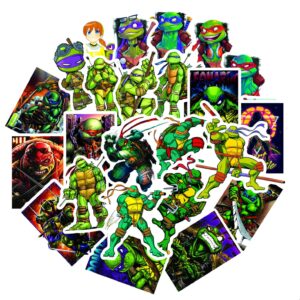At the core of permanents in Magic: The Gathering lies the keyword ability called Cumulative Upkeep. This feature demands the controller of the permanent to pay an increasing cost each turn or risk sacrificing the said permanent. The payment required depends on the number of age counters on the permanent. Cumulative Upkeep made its debut in the Ice Age expansion set, but its use was limited until the release of Weatherlight. It was later briefly reintroduced in Coldsnap to ensure continuity with Ice Age.
What is Cumulative Upkeep?
According to the Comprehensive Rules, Cumulative Upkeep is a triggered ability that imposes an increasing cost on a permanent. The term “Cumulative upkeep [cost]” means:
At the beginning of your upkeep, if this permanent is on the battlefield, put an age counter on this permanent. Then you may pay [cost] for each age counter on it. If you don’t, sacrifice it.
Do I Have to Pay it?
No, because the text says, you may pay the cost, it is optional. However, if you don’t pay it, you must sacrifice the permanent.
Additional Rules of Cumulative Upkeep
If there are choices associated with the cost, each choice is made independently for each counter, then either the entire set of costs is paid, or none of them is paid. Partial payments are not allowed.
For instance, if a creature has “Cumulative upkeep {W} or {U}” and has two age counters on it, the creature’s controller puts an age counter on it, and then they may pay {W}{W}{W}, {W}{W}{U}, {W}{U}{U}, or {U}{U}{U} to keep the creature on the battlefield.
On the other hand, if a creature has “Cumulative upkeep—Sacrifice a creature” and one age counter, the controller cannot choose the same creature to sacrifice twice. Instead, they must either sacrifice two different creatures or the creature with cumulative upkeep.
If a permanent has multiple instances of cumulative upkeep, each triggers separately. However, the age counters are not connected to any particular ability; each cumulative upkeep ability will count the total number of age counters on the permanent at the time that ability resolves. For example, a creature has two instances of “Cumulative upkeep—Pay 1 life.” The creature has no age counters, and both cumulative upkeep abilities trigger. When the first ability resolves, the controller adds a counter and then chooses to pay 1 life. When the second ability resolves, the controller adds another counter and then chooses to pay an additional 2 life.
It’s important to note that paying cumulative upkeep is always optional.
If the controller chooses not to pay, the permanent with cumulative upkeep is sacrificed. Partial payments of the total cumulative upkeep cost cannot be made. For instance, if a permanent with “Cumulative upkeep {1}” has three age counters on it when its cumulative upkeep ability triggers, it gets another age counter, and then the controller chooses to either pay {4} or sacrifice the permanent.
Choices associated with cumulative upkeep costs include choosing an opponent, choosing a creature, choosing a color of mana, choosing a graveyard, and choosing “heads” or “tails” when flipping a coin. Each choice within a single payment is made independently. The entire set of choices must be legal and payable.

Finally, some permanents have abilities that trigger when their cumulative upkeep is paid. These abilities trigger when an entire upkeep payment is made. They don’t trigger once per individual cost payment. Several cards with cumulative upkeep do something based on the number of age counters on them when they’re put into a graveyard from play. This effect applies to all methods of leaving play, including being sacrificed after missing a cumulative upkeep payment.
History of Cumulative Upkeep
Cumulative Upkeep, a mechanic in Magic: The Gathering, made its unofficial debut in Arabian Nights with the card Cyclone. Although the card did not have the keyword, it functioned similarly to cumulative upkeep.
Sometimes cards have effects that could be associated with a specific keyword but do not have it. For instance, Tireless Tracker has the same effect as landfall but does not have the keyword.
The keyword officially debuted in Ice Age in 1995, and cumulative upkeep has appeared in several sets since then, including Alliances, Mirage, Visions, Weatherlight, Unhinged, and Coldsnap. Some cumulative upkeep cards were also reprinted in supplemental sets and products such as Unsanctioned, Masters Edition I, Masters Edition II, Masters Edition IV, and Commander 2011.
However, cumulative upkeep has not appeared in any black-border sets since Coldsnap in 2006, except for Un-sets, Commander precons, and online-only reprint sets. This suggests that the mechanic may not be evergreen and may not be consistently printed again in the future.
What’s the Best Cumulative Upkeep Card?

Taxing effects can have a compounding effect in EDH that quickly snowballs. Mystic Remora is one such card that draws one or more cards for each player during the first few turns of the game with little cost. However, Remora is a controversial card in some Commander circles, as it is considered one of the most powerful cumulative upkeep cards.
















